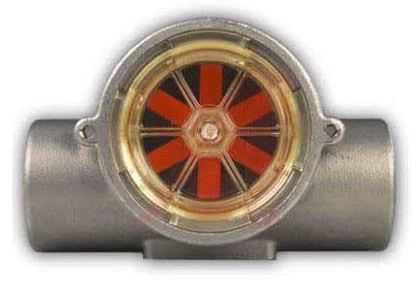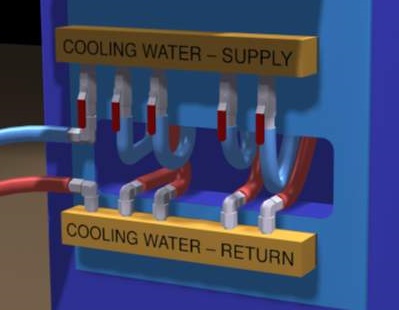The AWS recommended temperature range for spot welding cooling water is 65-85 degrees F. One should make a decided effort to stay within this range for the protection of the transformer and control.
These temperatures cover the range of ground water temperature to what would be expect from a recirculating water tower. All of these temperatures will produce good welding results. There must also be water flow at all times. This flow varies and is normally recommended by the machine manufacturer. The colder the water the better the results but we don’t want to cause condensation on the electrical components of the machine with water that is too cold.
Flow Indicator Water Manifold
All of these water temperatures are much colder than the nugget temperatures of any materials being welded. These water temperatures will chill nuggets properly be they brass, aluminum, stainless or steel workpieces.
If your in house water systems are very cold and chilling the product too quickly then alter your schedule to add some down slope to slow down the cooling. If the system is warm and can’t keep up, a chiller might be necessary. Your electrode should cool down after each weld.
If the electrodes are not cooled with the proper temperature water they will mushroom and fail prematurely. This means downtime and reduced production and or bad parts. Proper temperature water is imperative to good electrode life and successful manufacturing.
Cables and shunts will also fail prematurely is not cooled properly. Connections will corrode at a more rapids pace if at a higher temperature leading to higher resistances and more rapid degradation of the whole system over time.
Proper cooling is necessary for the entire resistance welder to operate properly from the electrode to the control and all components in between.
References:
AWS J1.2M/J1.2.2016 Guide to Installation and Maintenance of Resistance Welders
AWS Journal Article - “Influence Of Water Temperature And Flow On Electrode Life . http://unitrol-electronics.com/assets/docs/tech-papers/electrode.PDF



